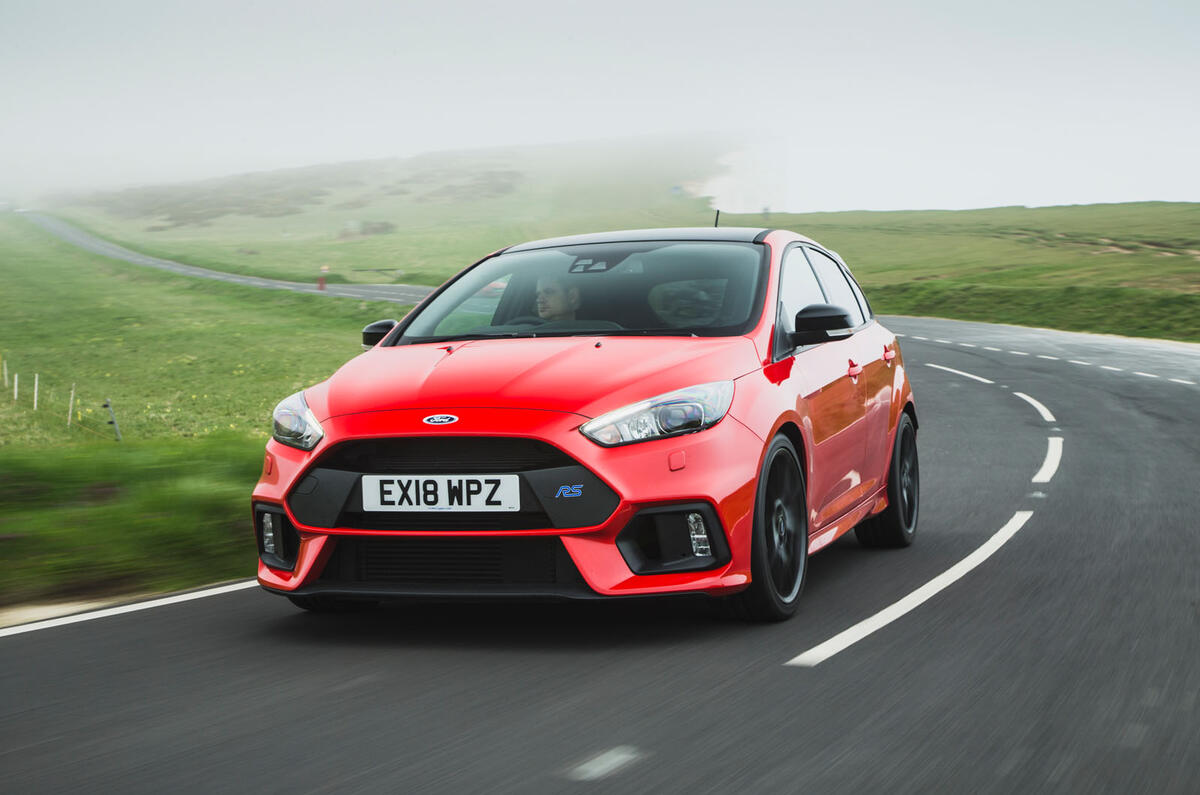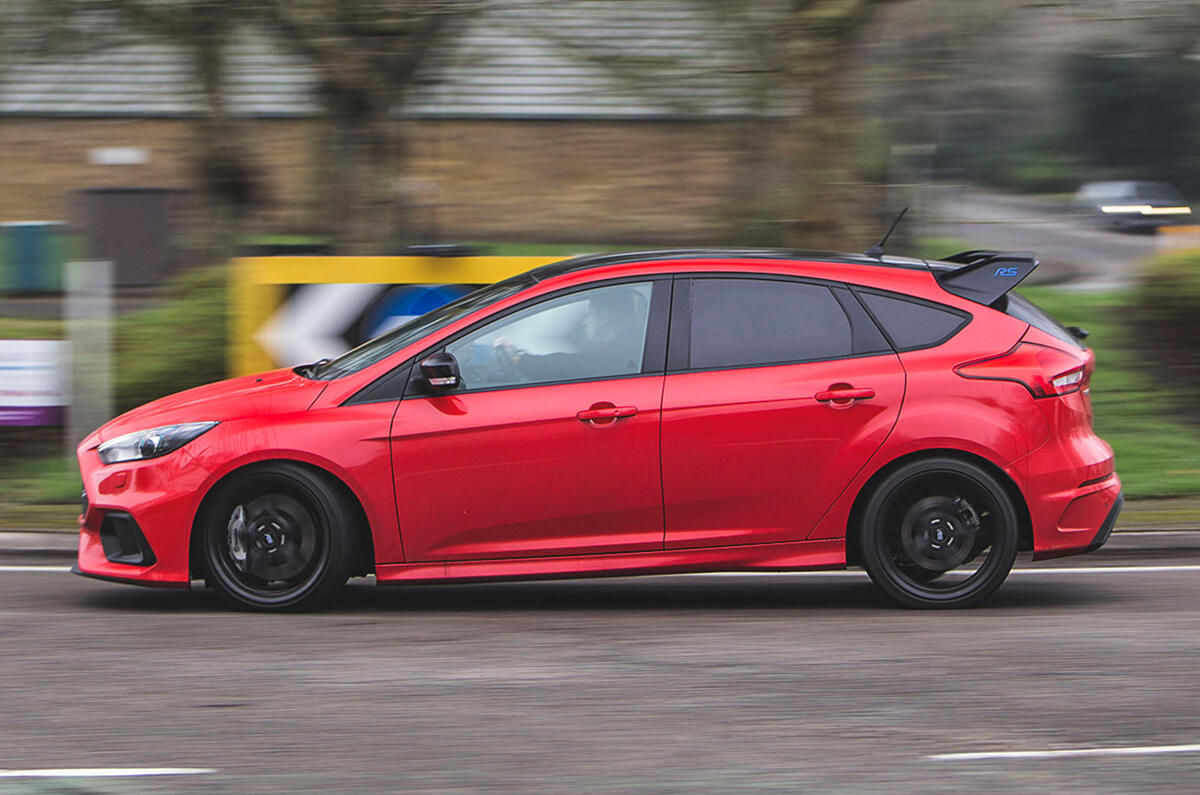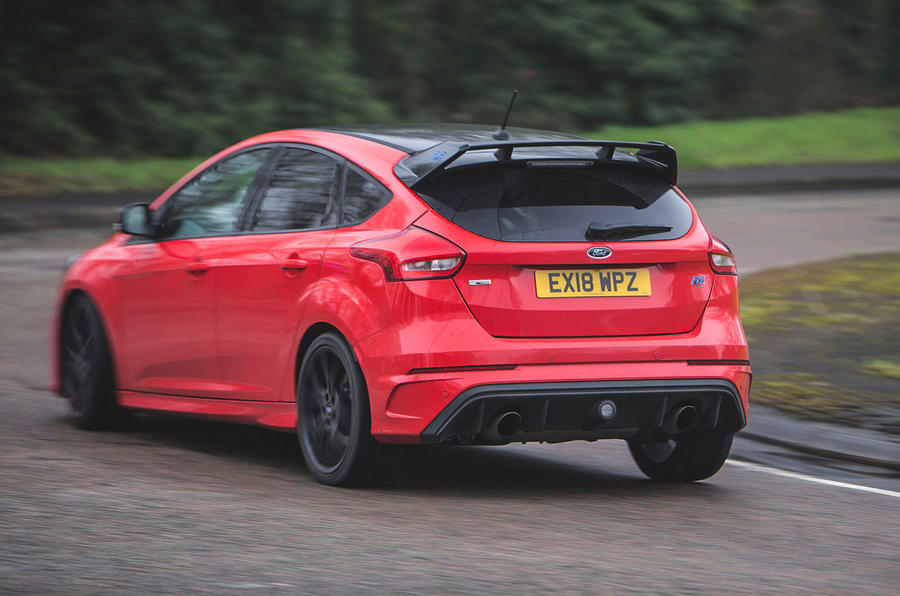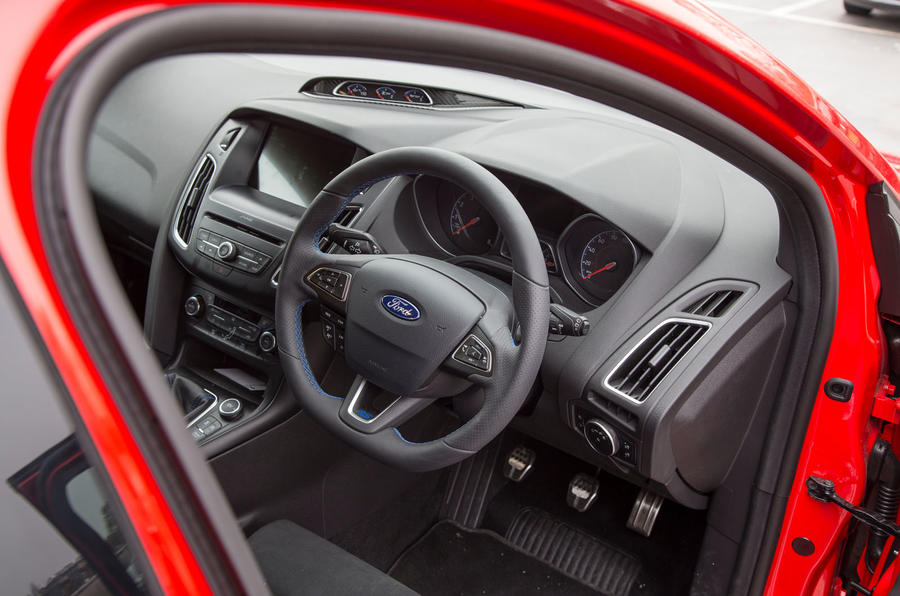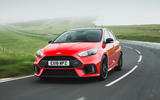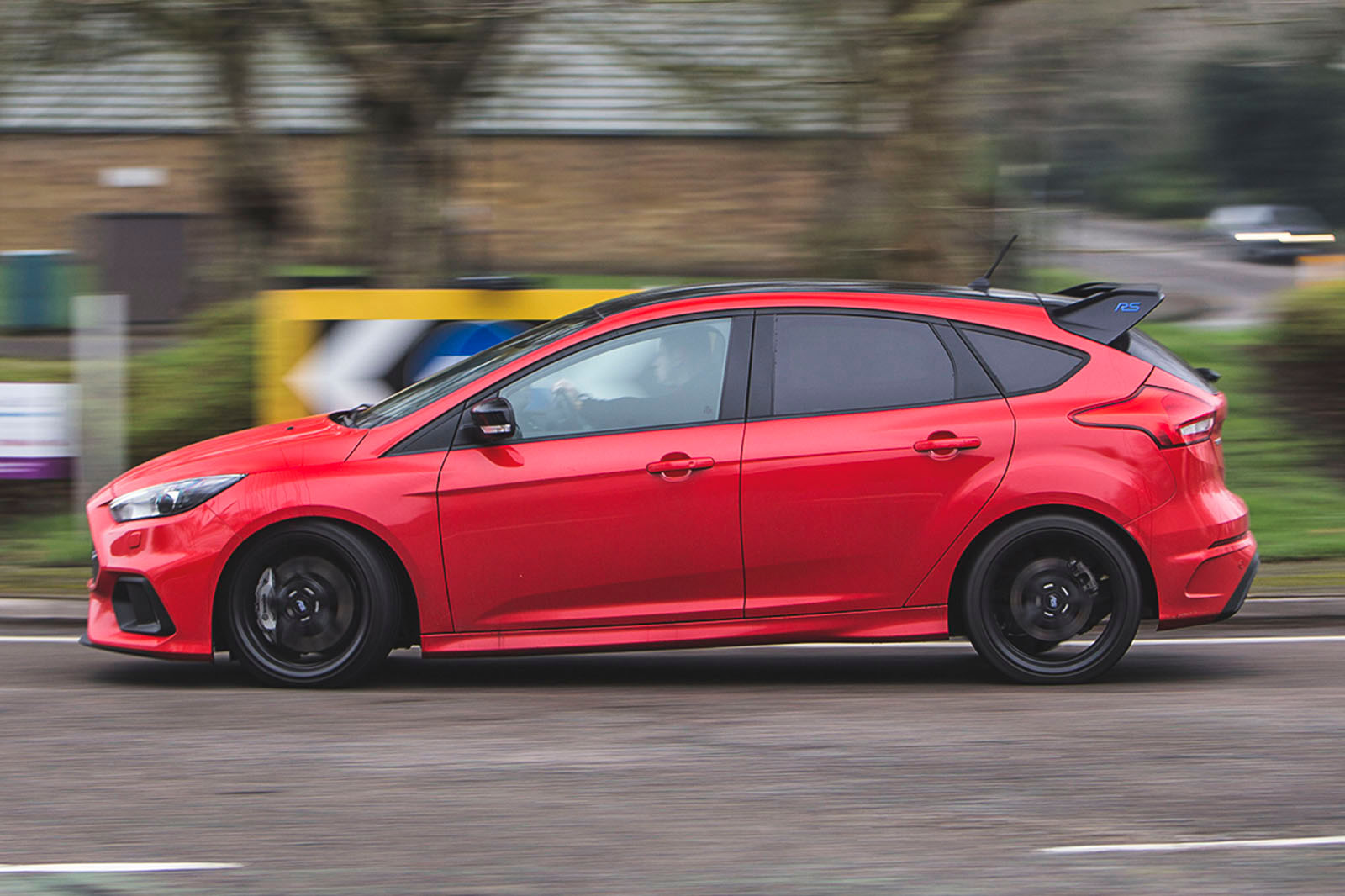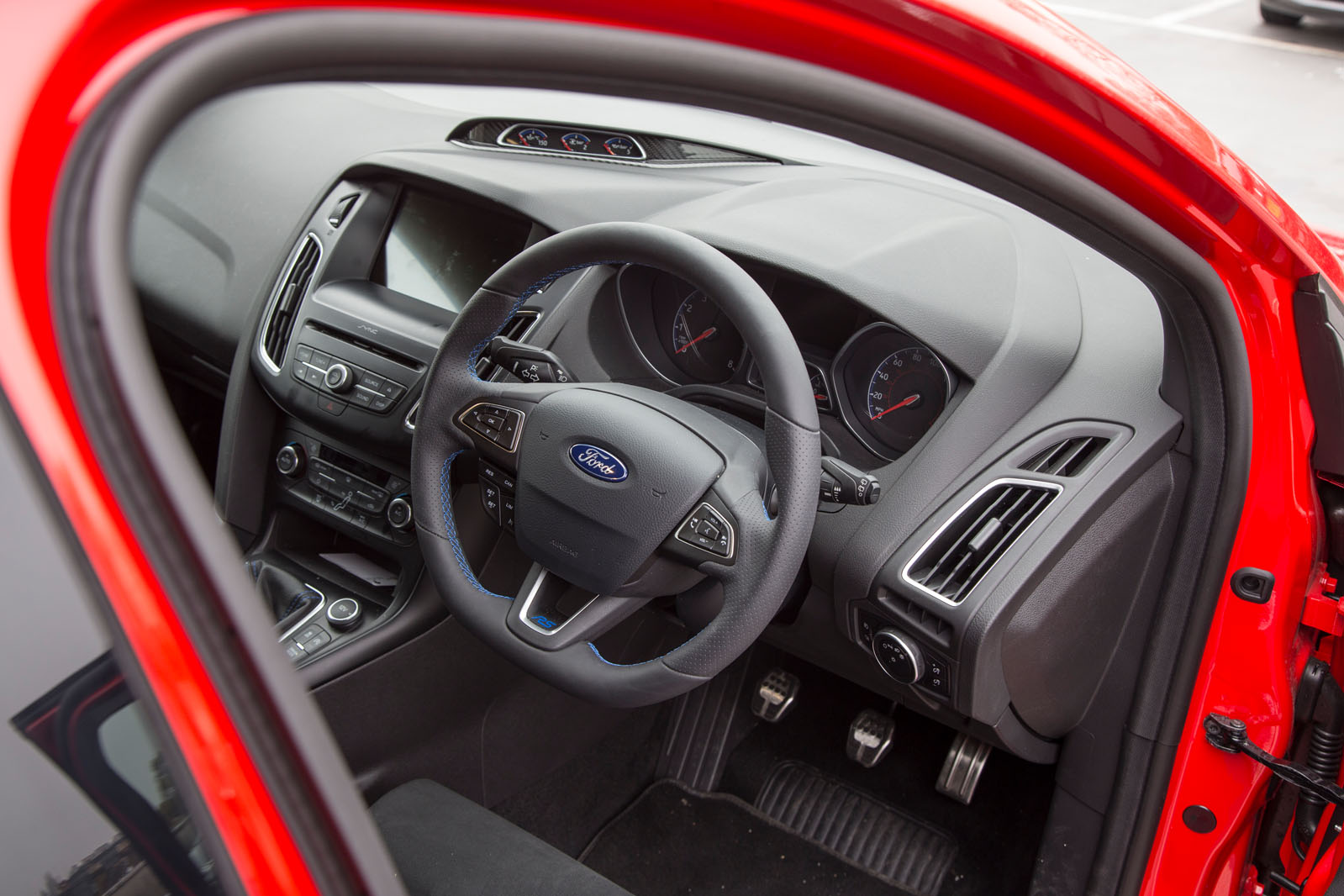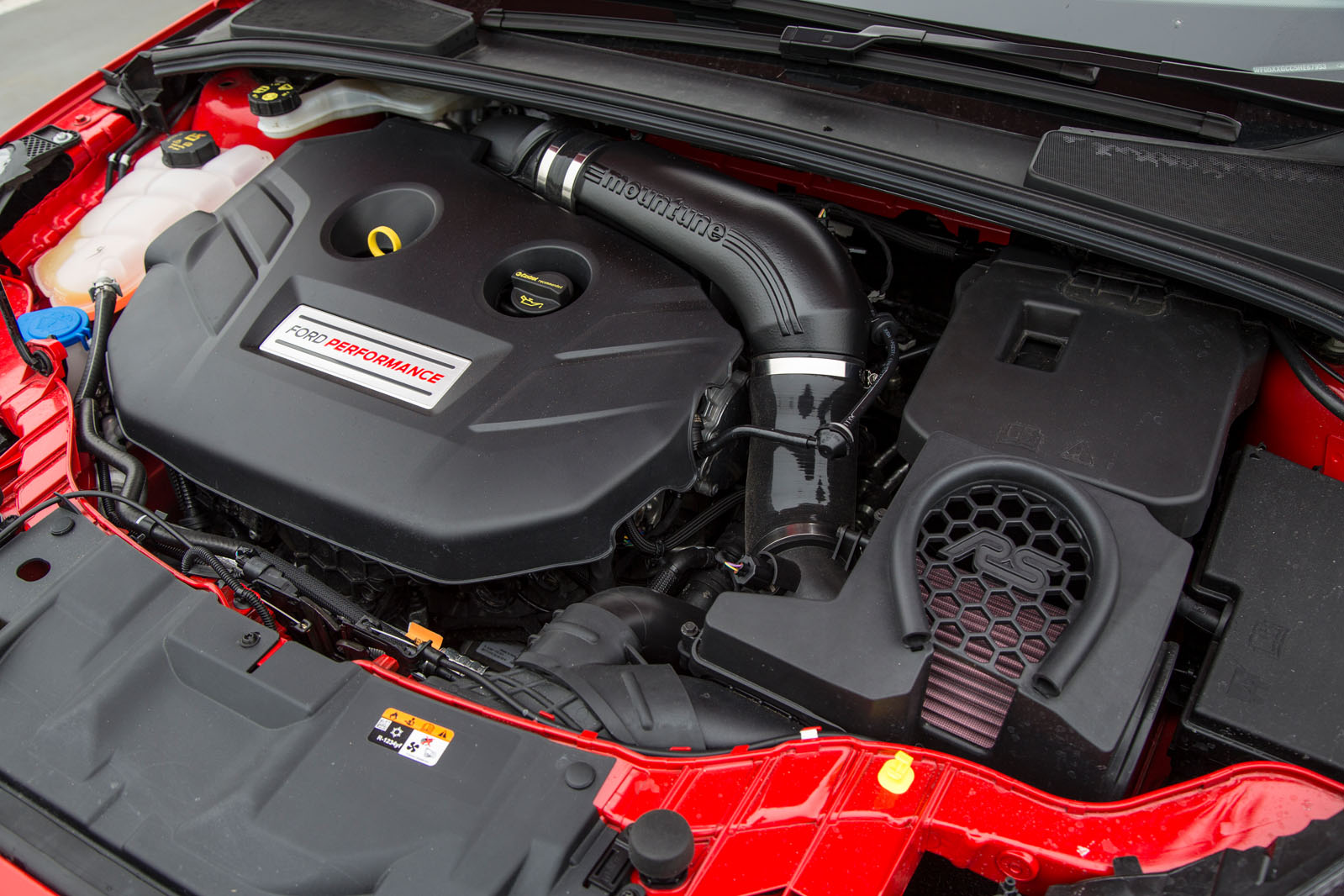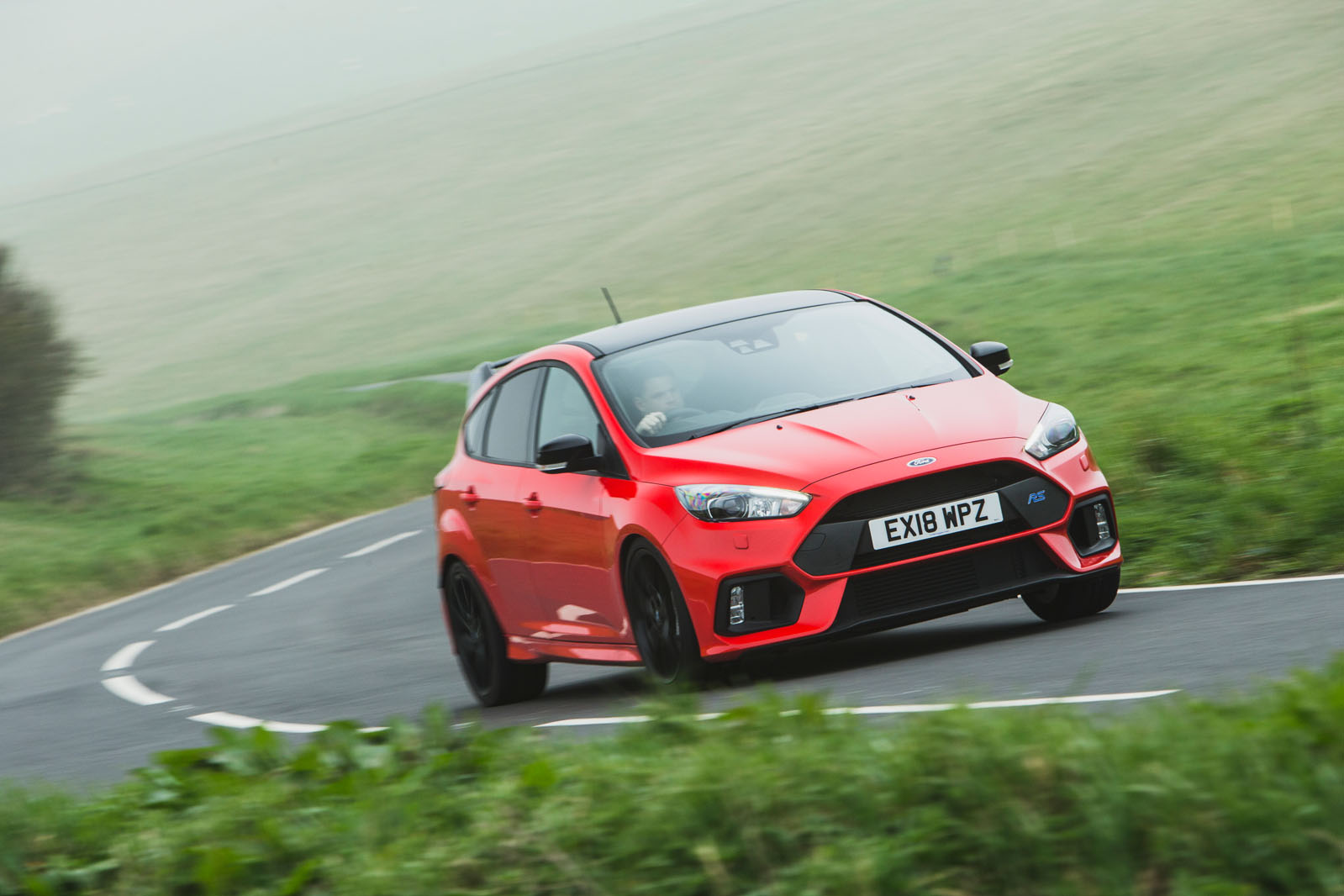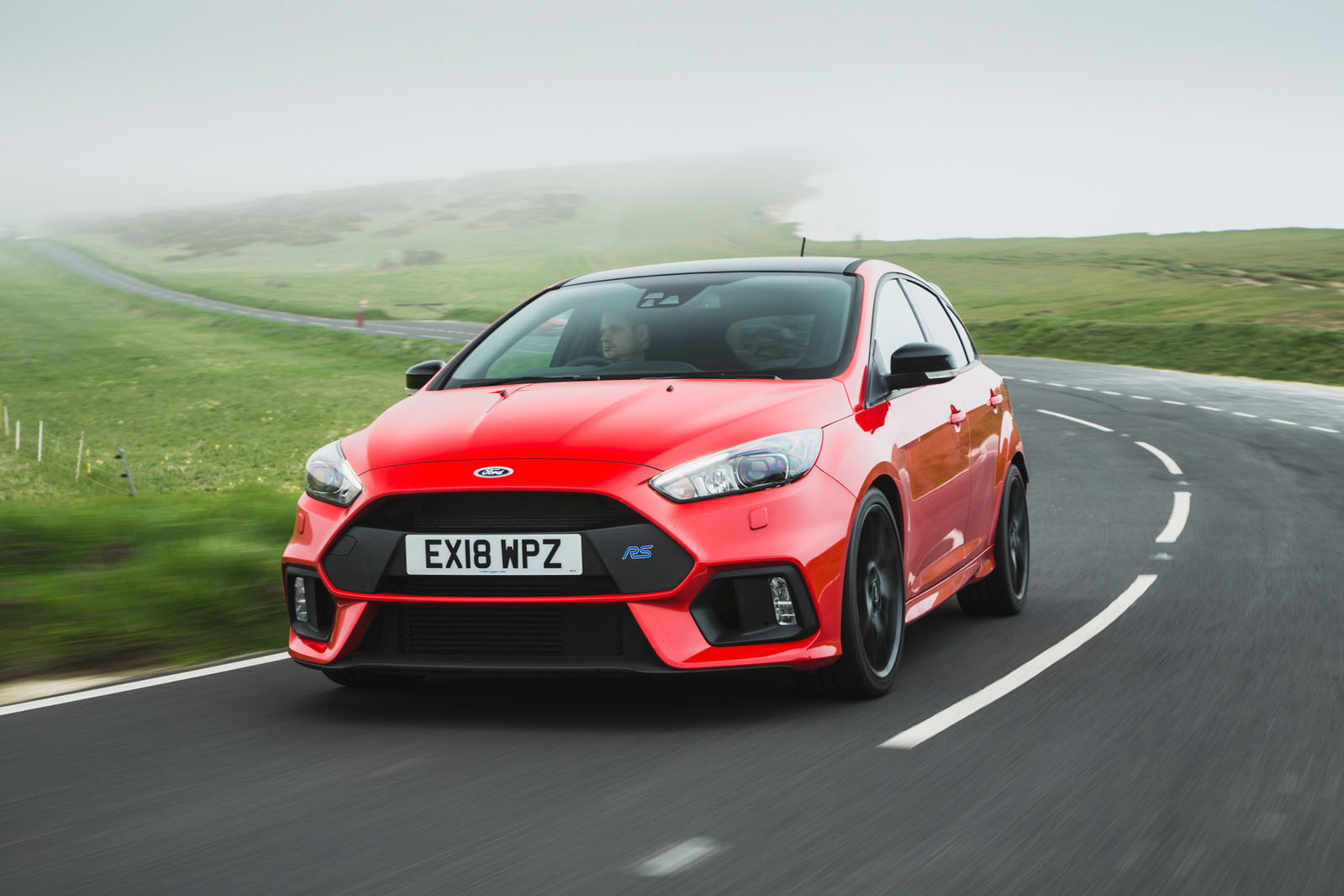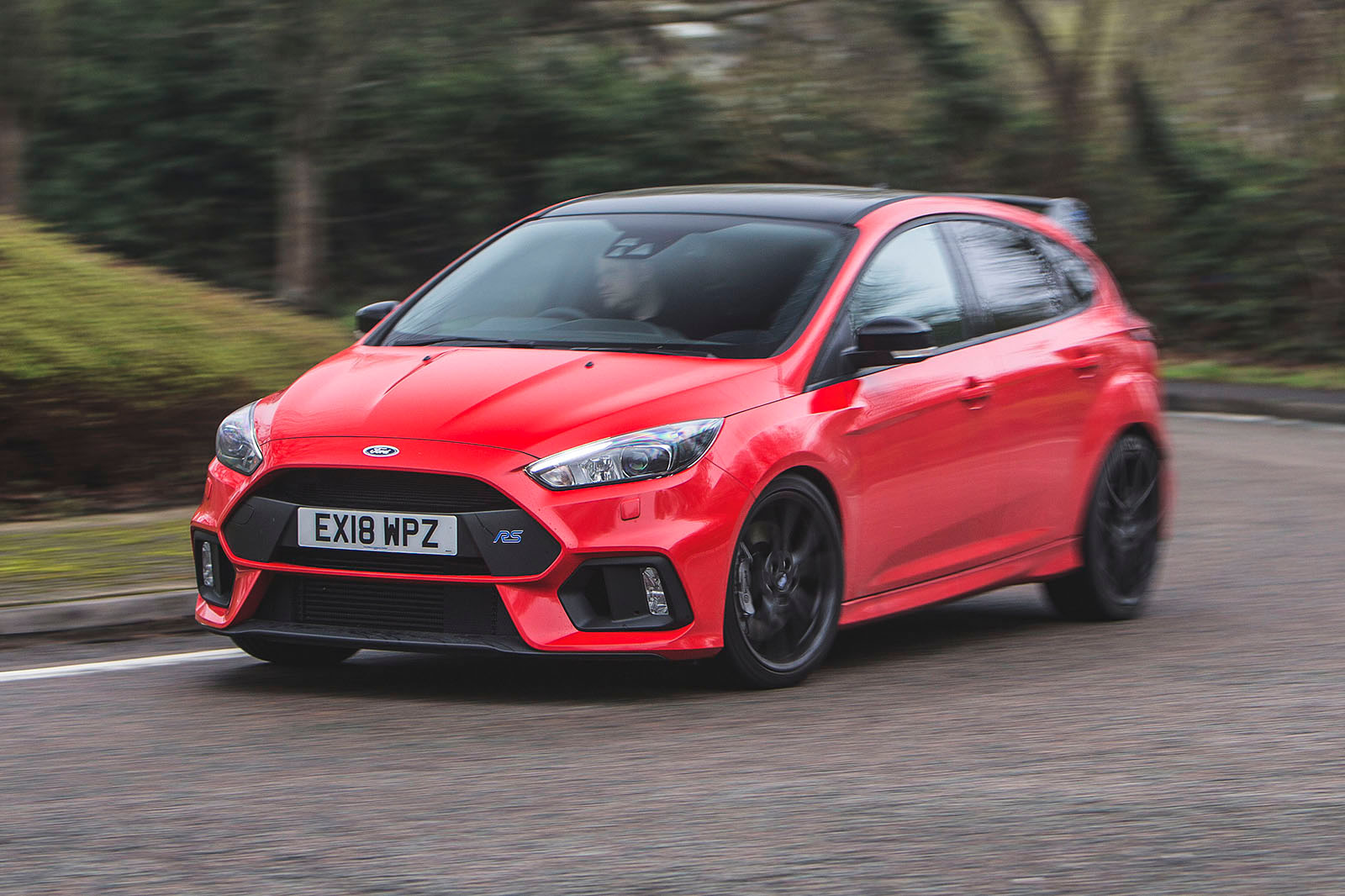It’s impossible to come to a car such as the Focus RS without big expectations, both subjective and objective. Only considerably more expensive and more powerful cars, such as Mercedes-AMG A 45, the facelifted Audi RS3 and even the TT RS, prevent your enthusiasm from running away with itself, and then only by the narrowest of margins.
We’ll deal with the subjective impressions first: how fast does the new RS really feel? Given its head, you’d say about as quick as an £80,000 sports car until you hit fourth gear. As strong as an RS3, probably the most heroically endowed hot hatchback of all time? Not quite. But it’s stronger than the Ford’s like-for-like competition by price, and unmistakably so.
Truth is, the RS’s engine isn’t one to keep you awake at night. It isn’t the car’s greatest asset and it doesn’t possess the kind of firepower needed to take on Quattro GmbH and AMG on level terms. But it’s got more than enough power, response and aural presence to hold its own.
For such a hard-working four-cylinder unit, the power delivery is pleasingly flexible and balanced – not at all dominated by turbo boost and surging mid-range torque, but crisp-feeling under your foot and willing to rev out. And to listen to, there’s an offbeat thrum to the engine’s exhaust note that you don’t expect from a four-pot unit, bringing a certain richness to the driving experience.
Ford tuning specialists Mountune has already created two upgrade packs ready to be fitted to the RS, and fully approved by Ford Performance. The ‘phase one’ kit includes a set of 19in Oz Racing wheels, upgraded parts for the air intake system and an optional Quaife gear-based differential – to replace the clutch system fitted to the RS as standard.
The ‘performance upgrade kit’, also known as FPM375 sees the RS’s output increase to 370bhp allowing it to reach 62mph from standstill in 4.5sec. The kit includes a re-flashed ECU, high performance air filter, bespoke crossover duct and upgraded air re-circualtion valve, which makes the Focus's throttle crisper and the engine more rabid over 3000 rpm.
American performance brand Hennessey also has given the Focus RS a going over, increasing the power by 60bhp and peak twist by 101lb ft taking the overall RS figures to 405bhp and 425lb ft of torque. The parts can be shipped to the UK and will set owners back £2258 for the privilege.
For those who want the best aftermarket parts cherry-picked for the Focus RS, Euro Car Parts has created a kit costing £2017 and consists of H&R springs, anti-roll bars and wheel spacers, a choice of K&N air filters and a choice of Scorpion and Milltek exhaust systems to help the Ford breath better. Crucially however, none of these parts are covered under Ford's warranty.
Moving on, then. The RS’s objective performance will have been affected somewhat by Ford’s decision to stick with a six-speed manual gearbox. One of the reasons why a Mercedes-AMG A45 will launch harder than this car is because its seven-speed dual-clutch auto allows it to be shorter-geared in the lower speed ranges.
Ford’s alternative philosophy is to compromise off-the-line acceleration slightly but enhance your sense of involvement in the launch process through a perfectly weighted clutch pedal and a short, punchy manual gearlever – both of which are a joy to use.
On a rainy day in April, fitted with optional Michelin Cup 2 tyres that don’t work as well in the wet as the car’s standard rubber, we produced an average 5.3sec 0-60mph time from the car; on that basis, expect it to be well capable of sub-five-second runs in the dry.
And much more important, in contrast to many of the Focus RS’s two-pedal rivals, which practically launch themselves, we can’t remember the last time a fast hatchback felt this exciting to figure.



